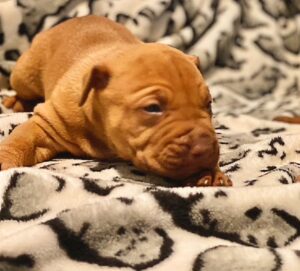HISTORY OF THE RED GAME DOGS
HISTORIAN RICHARD STRATTON "THE OLD FAMILY RED NOSE"
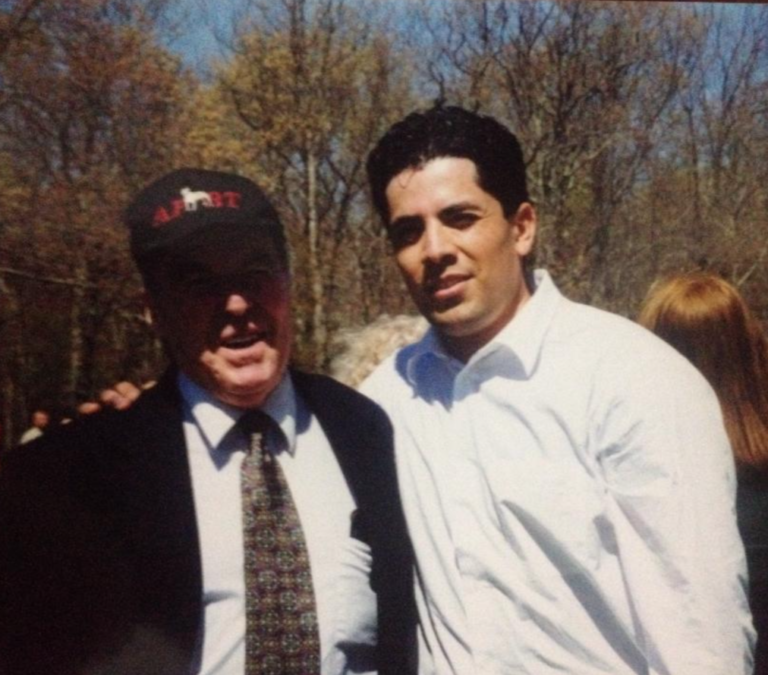
To Mr.Richard Stratton and the men before me that took an important part in the great of the past of the Real American Pit Bull Terrier. Please accept my most sincere gratitude. I traveled the world for years, showing multiple dogs on transoceanic trips, And the work of these men was behind and before my times. Enjoy a great history. I tell you, no matter how many black dogs or other colors they mixed into the breedings, the red puppies came on top, and by 1980 was almost clear that the red dogs had more quality in competition and production.
I take into consideration Ernest Hollingsworth’s ideas, no black dogs. It is part of the selection process where the best will take over, and the numbers are RED.
I take into count Buckskin, yellows, and red noses into a pool of only the best !! Animals like Redboy, Yellow, Mayday, Awesome Buck, The Bagman, Siega, Awesome Mayday, Athos, or Himars.
The best reds today are here, bar none. My work paid off, and so did your work. THANK YOU!
_ CHICO LOPEZ_
Written by Richard Stratton
He looks no more out of place in the Ancient landscapes of 16th century paintings than he does in the ultramodern setting. It is beyond my capabilities to imagine an end to him, for every generation seems to supply a nucleus of hard core devotees completely committed to the breed. In any case, you can look into the murky past, and you will find it difficult to discern a beginning place for the breed and fortunately, the future seems to threaten no demise either.
Old strains are a particularly fascinating part of this tradition, and the Old Family Red Nose is one of the better-known old strains. The appearance of the red-nosed dogs always attracts attention, but it takes a little getting used to for some people to consider them truly beautiful. However no one denies that they radiate “class.”
Characteristically, a dog of the red-nosed strain has a copper-red nose, red lips, red toe nails, and red or amber eyes. Some think the strain was bred for looks. Others consider any dog that just happens to have a red nose to be pure Old Family Red Nose. It is hoped that the following will dispel such notions. About the middle of the last century, there was a family of pit dogs in Ireland bred and fought chiefly in the counties of Cork and Kerry that were known as the “Old Family.” In those days, pedigrees were privately kept and jealously guarded. Purity of the strains was emphasized to the extent that breeders hardly recognized another strain as being the same breed. For that reason all the strains were closely inbred. And whenever you have a closed genetic pool of that type, you are likely to have a slide toward the recessive traits, because the dominants, once discarded, are never recaptured. Since red is recessive to all colors but white, the “Old Family” eventually became the “Old Family Reds.” When the dogs began coming to America, many were already beginning to show the red nose.
The “Old Family” dogs found their way to America mainly via immigrants. For example, Jim Corcoran came to this country to fight the World Heavyweight champion John L. Sullivan, and stayed to become a Boston policeman. He sent for dogs from his parents back in Ireland, and his importations and expertise as a great breeder have earned him a prominent place in American Pit Bull Terrier history. Many other Irish immigrants also sent back to their families to request for dogs, and the “Old Family” and related strains became firmly established in the United States.
Back to the Old Family Reds. The first big splash made by the red noses was back around 1900 when the great breeder William J. Lightner, utilizing Old Family Red bloodlines, came up with some red-nosed dogs that really made a name for themselves. Now Lightner once told me that he did not breed for that red-nosed coloration. In fact, he did not even like it and he only put up with it because the individual dogs were of such high quality. Eventually, Lightner gave up on the red-nosed strain when he moved from Louisiana to Colorado, where he came up with a new strain that consisted of small dark-colored dogs with black noses. He had given up on the other strain because they were running too big for his taste and because he didn’t like the red noses.
At this point in our story, we come upon a comical, but highly-respected, figure in the personage of Dan McCoy. I have heard old-time dog men from all over the country talk about this man. Apparently, he was an itinerant fry cook and not much of a success in life judged by normal standards, but he didn’t care about that. But what he did care about were Pit Bull Dogs, and he had a wealth of knowledge about the breed. His uncanny ability to make breedings that “clicked” made him a respected breeding consultant and a most welcome guest at any dog man’s house–even if he had just dropped off a freight train!
Always with his ear to the ground regarding anything that involved APBT’s, McCoy got wind of the fact that an old Frenchman in Louisiana by the name of Bourgeous had preserved the old Lightner red-nosed strain. So he and Bob Hemphill went to that area, and with the aid of Gaboon Trahan of Lafayette, they secured what was left of the dogs. McCoy took his share to the Panhandle of Texas and placed them with his associates L.C. Owens, Arthur Harvey, and Buck Moon. He then played a principal role in directing the breedings that were made by these fanciers. And from this enclave came such celebrated dogs as Harvey’s “Red Devil” and Owens (Ferguson) “Centipede.” Hemphill eventually kept only dogs of the red-nosed strain. According to Hemphill, it was McCoy that first starting using the term “Old Family Red Nose” for the strain.
Another breeder who was almost synonymous with the red-nosed strain was Bob Wallace. However, Bob’s basic bloodlines was not pure Old Family Red Nose. But in the late 40’s, he was looking for the red-nosed strain in order to make an “outcross.” (Bob was a scrupulously careful breeder who planned his breedings years in advance.) Unfortunately, he found that the strain was nearly gone, most of it having been ruined by careless breedings. He managed to obtain seven pure red-noses of high quality whose pedigrees he could authenticate. The strain was subsequently saved for posterity and in the 1950’s became the fashionable strain in Pit Bull circles. In fact, it was Bob Wallace who wrote an article in 1953 called “There is no magic in Red Noses” in which he tried to put a damper on the overly enthusiastic claims being made by some of the admirers of the strain. No more fervent admirer of the Old Family Reds ever lived than Wallace, but he obviously felt that the strain could stand on its own merits.
As a strain, the Old Family Red Nose has several things going for it. First, it is renowned for its gameness. Second, some of the most reputable breeders in all Pit Bull History have contributed to the preservation and development of the strain. People like Lightner, McClintock, Menefee and Wallace, just to mention a few. Finally, as McNolty said in his 30-30 Journal (1967) “Regardless of one’s historical perspective, these old amber-eyed, red-nosed, red-toe-nailed, red-coated dogs represent some of the most significant pit bull history and tradition that stands on four legs today.
ADDING SOURCES
Articles written by Mr.Richard Stratton are located on his website .
A Modern Champion of the Old Family Red Strain
THE MODERN CHAMPION OF THE OLD FAMILY RED NOSE
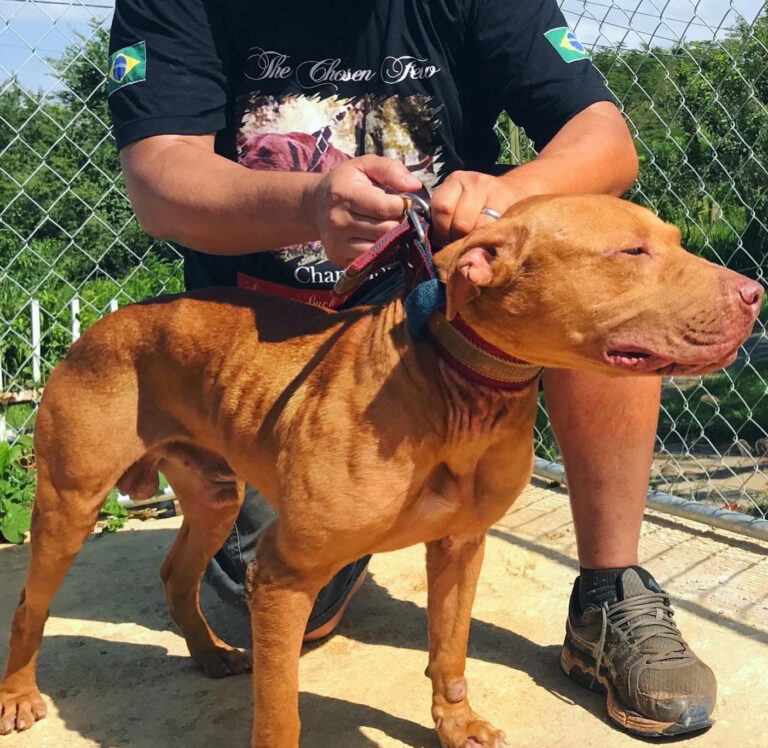
THE GLOBAL CHAMPION, THE BAGMAN, IS A SUPER PET AND A SUPERB HERO.
Bagman, an old family red nose pitbull, is a specific line or strain of the American Pit Bull Terrier breed known for its distinctive red-colored nose. The origin of this line can be traced back to breeders such as William J. Lightner and Con Feeley, who bred the original dogs that would later become known as the old family red nose pitbulls.
As for who started the old family red nose line, it is difficult to pinpoint a single individual as it was a group effort among several breeders who shared a passion for these dogs. However, Dan McCoy is credited with coining the phrase “Old Family Red Nose” to distinguish these dogs as a unique line or strain of the American Pit Bull Terrier.
Red nose is indeed a bloodline, but it is important to note that not all pitbulls with a red nose come from this particular line. The red nose is simply a physical characteristic that is passed down through genetics.
As for whether red nose pits are more aggressive, it is a common misconception that is not necessarily true. The temperament of a pitbull, regardless of its nose color, is primarily determined by factors such as socialization, training, and environment. While some may argue that certain bloodlines or strains have certain traits, one must remember that each dog is unique and should be judged based on its behavior and actions.
Here are the questions and replies formatted as a FAQ:
Q: What is an old family red nose pitbull? A: An old family red nose pitbull is a particular line or strain of the American Pit Bull Terrier that is recognized for its distinctive red nose. The term “old family” refers to a group of breeders who worked with this line of pitbulls for generations, striving to maintain its unique characteristics.
Q: Who started old family red nose? A: The old family red nose line of pitbulls was originally bred by William J. Lightner and Con Feeley in the early 20th century. However, it was Dan McCoy who is credited with coining the term “old family red nose” to describe this particular line of pitbulls.
Q: Is red nose a bloodline? A: Yes, red nose is a bloodline of the American Pit Bull Terrier. It is recognized as a distinct line within the breed and is characterized by its distinctive red nose.
Q: Are red nose pits more aggressive? A: Red nose pits are not inherently more aggressive than other pitbulls. Like any breed of dog, their temperament and behavior is shaped by their upbringing, training, and socialization. It’s important to remember that aggression in dogs is usually the result of negative experiences or lack of proper training and socialization, not genetics.
The Modern Old family red nose a way to call THe Golden Vein by Chico Lopez
- The Bagman is a highly prized pit bull in the Golden Vein bloodline created by Chico Lopez, a modern Old Family Red Nose pit bull breeder.
- The Golden Vein bloodline is highly regarded for its strong and loyal dogs, with the Bagman being a prime example of this.
- The Bagman is a descendant of the original Old Family Red Nose pit bulls known for their tenacity, courage, and loyalty.
- These dogs were initially bred for bull-baiting and dog fighting, but today they are cherished as loving family pets and loyal companions.
- Like many Old Family Red Nose pit bulls, the Bagman has no human aggression and is known for its gentle and loving nature.
- These dogs are brilliant and trainable, making them great companions for families with children or those looking for a loyal guard dog.
- The Old Family Red Nose pit bulls are considered the original velvet and steel dogs, with sleek and muscular bodies and soft, velvet-like coats.
- The Bagman is a testament to the hard work and dedication of breeders like Chico Lopez, who have worked tirelessly to preserve and improve the bloodline over the years.
- If you’re looking for a great breeder, starting the journey of the Old Family Red Nose pit bulls is a great place to begin.
- With their rich history, loyal temperament, and unmatched courage and tenacity, the Bagman and the Golden Vein bloodline represent the best of the Old Family Red Nose pit bulls.
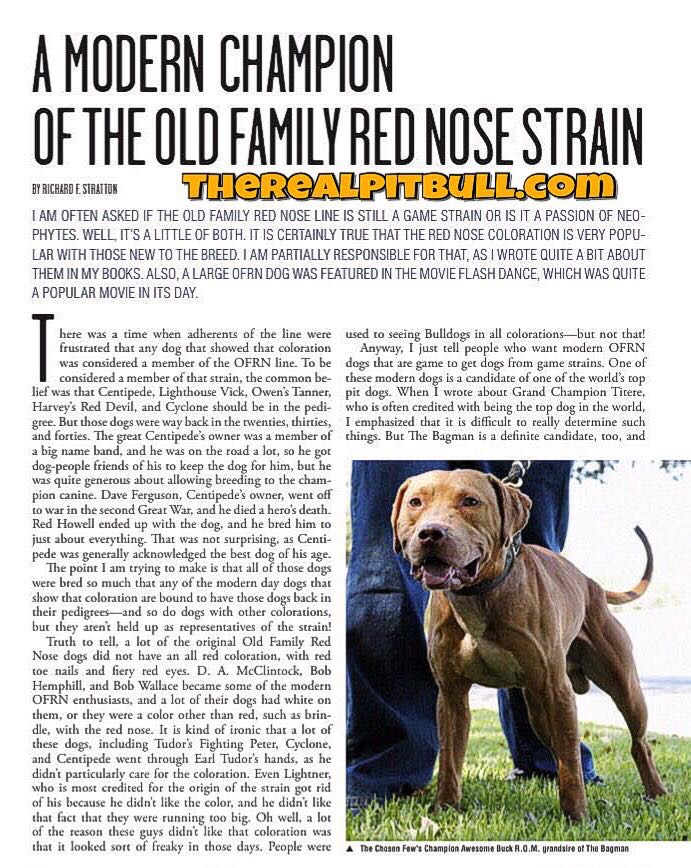
FERGUSON'S CENTIPEDE
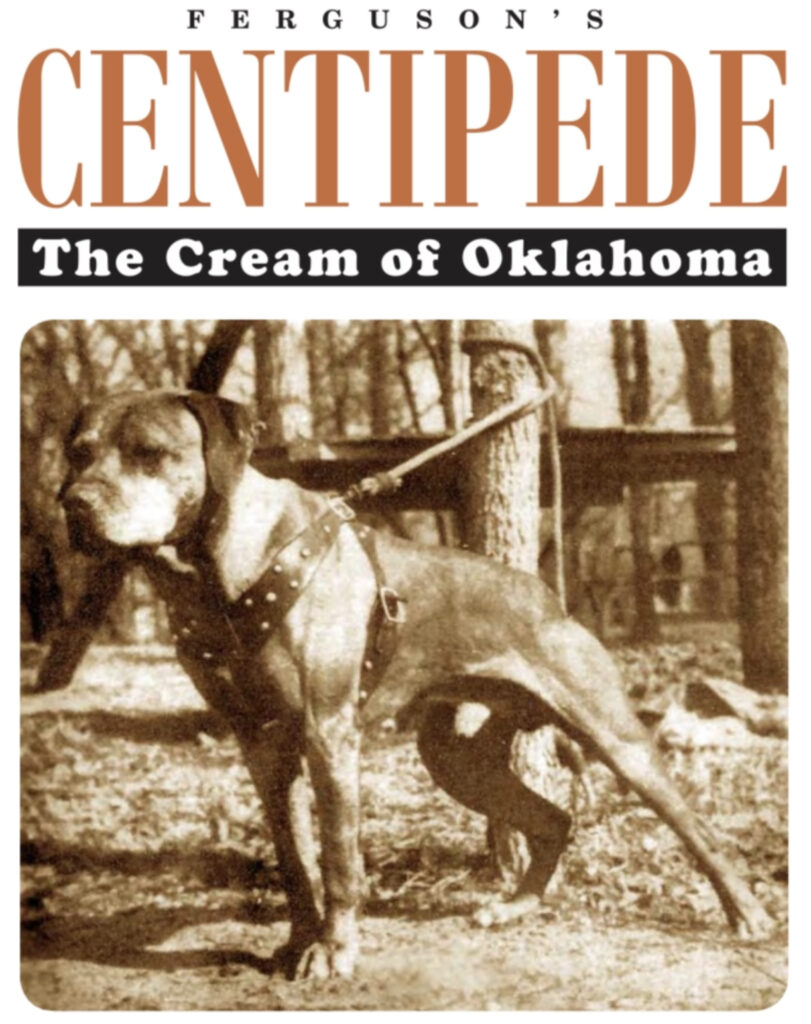
As I remember,
The story told by The Great Richard Stratton,
It is perhaps impossible for modern dog people to realize the great reputation that Ferguson’s Centipede enjoyed in the late 30s and early 40s. Perhaps it is sufficient to say that there was never any doubt that he was the best pit dog in the country at that time. Also, more than any other dog, he helped launch the popularity of the Old Family Red Nose strain, although he was more often referred to at the time as a “Lightner dog.” At the beginning of his career, Centipede may not have been a unanimous choice for best dog in the country, as his ability was so great that it was not known if he was game. But his final match was against George Saddler’s Black Boy, and it went two hours and twenty-two minutes without a turn by either dog, with Centipede finally prevailing.
It was the third contest which convinced everyone of what a great dog Centipede was. Saddler was known to scout his opponent in a big money match like the one with Centipede, and he brought a dog that he thought could beat him. The fact was that both dogs had a reputation as bone-crushing pit warriors. I have an original flyer that advertised the fight, much as a modern prize fight, with Centipede being touted as the “Cream of Oklahoma” and Black Boy as the “Pride of the Delta.”
Centipede was whelped about 1933 in the kennels of L. C. Owens in Texas. He was the result of Dan McCoy’s having discovered that there was still some of the old Lightner blood down in Louisiana. McCoy and Bob Hemphill made the journey down to that part of the country and bought several dogs. Hemphill kept his close to the vest, but Dan McCoy was always on the move and couldn’t keep dogs, so he left his with trusted friends, including Arthur Harvey and L. C. Owens in Amarillo, Texas. Owen’s Mickey was bred to the renowned Harvey’s Red Devil to produce the litter which contained Centipede.
When I met Bill Lightner in Colorado Springs, he and his wife were in their eighties, and they kept a kennel of basically small dogs of various coloration. Lightner and his wife were uncanny in their ability to select good brood stock. They had left the red, red-nosed dogs down in Louisiana because Lightner didn’t like the looks of those dogs, and he felt they were coming out too big. Centipede would be an example of that, as his pit weight was 54 pounds. To listen to many modern dog men, the old time pit dogs were never that big, but not only were there these two great dogs at that size, but they each had been matched twice before they were matched into each other. Be aware that pit weight in those days was lighter than today, so the dogs were easily sixty-five pounds on the chain.
Other than size, the only fault with Centipede was that he was a laid back dog and nearly impossible to work. Frustrated, Owens sold him to Earl Tudor. Although something of a genius in working dogs, even Tudor had a problem with Centipede. When he walked the dog, he stayed back at the end of the leash. Puzzled, Tudor stopped and looked at the dog, and the dog lay down! As patient as he was with the dogs, he wasn’t sure that he could ever get Centipede in shape. He decided to rely upon natural ability and endurance for his first contest, which Centipede won handily in less than thirty-five minutes.
The next opponent had a bit of a reputation, so Tudor enlisted his friend Red Howell to work the dog. Now Red was a real genius with dogs, a harbinger to the coming of Ham Morris just a few years later, another gem at training animals. Red never used force in training his dogs, but he understood their psychology. He discovered that Centipede was a natural house dog, and he would do anything for attention. Red’s girls would dress Centipede up in dresses and put lip stick on him, and the dog thrived on it.
Red and Centipede worked out a deal. If Centipede would run the turn table mill for a specified time, he could go in the house after his rub down. Nothing else would work. Centipede was unexcited by cats, and if Red placed a dog in Centipede’s view, his eyes showed fire, but the dog was too smart to not know that the harness was keeping him from getting to the dog, so he didn’t run the mill. Somehow Red was able to convey to the dog that he would get a reward for running the mill. The first time he took a few steps on the mill, Red brought him in the house. Very quickly, the dog got the idea. So Centipede spent a good part of his keep in Red’s house with his young daughters. Howell told Bob Wallace that Centipede was absolutely the smartest dog he ever saw of any breed. He would bring Red a bottle of beer, opening up the ice box to get it. Red swore that he could have taught him to open those bottles too.
The match between Centipede and Black Boy would qualify as a classic contest. The dogs met in the center like a couple of freight trains, and first Black Boy had the upper hand. In fact, the lead changed a couple of times, with its being anyone’s match up until the two-hour mark. At that point, Centipede finally took command for good. Saddler gave it up in 22 more minutes in a desperate attempt to save his dog.
After Centipede beat Black Boy, Tudor couldn’t get him matched, as everyone conceded that he was the best. Nothing his weight, or any weight, could beat him. That was the common opinion among dog men. This was evidenced by the fact that Tudor opened him up at catchweight with no takers. Frustrated, Tudor sold the dog to Dave Ferguson.
Now Dave Ferguson was well known and liked as a pit dog aficionado, but he couldn’t keep dogs, as he played trumpet in a big name band. He toured the country, and he spent a lot of time in New York and in San Francisco. For that reason, he left the dog with various trusted friends in the dog game. Dave was a good hearted guy, and he always allowed that whoever was keeping the dog could not only breed to him, but stud him out as well. Because of this situation and the dog’s great reputation, the dog was bred a lot, and if we trace back our pedigrees far enough, we will find Centipede there some place. We could do a lot worse!
Dave Ferguson was drafted into the army during the second World War, and he received decorations for heroism. None of the dog men were surprised about this, as they had always referred to him as “the little man with the big heart.” Unfortunately, Ferguson was shot and killed by a sniper in the last days of the war. There were lots of losses during that war, but that one particularly threw a pall over the pit dog fraternity.
Centipede died in the yard of D. A. McClintock, another genius with animals and a great lover of the Old Family Red Nose strain. By the time McClintock received the dog, he wasn’t producing any more, but he took care of him and even gave him time in the house. Like Red Dunham before him, McClintock considered Centipede the smartest dog he had ever seen.
Beyond being smart, Centipede was considered a great dog, the greatest pit dog of his time. When someone of those days referred to “the great one,” they didn’t have to mention the name. Everyone knew that it was Centipede.
Written by Richard Stratton, permission by Richard stratton. All copywriter owned now by Chico Lopez
Centipede's Pedigree
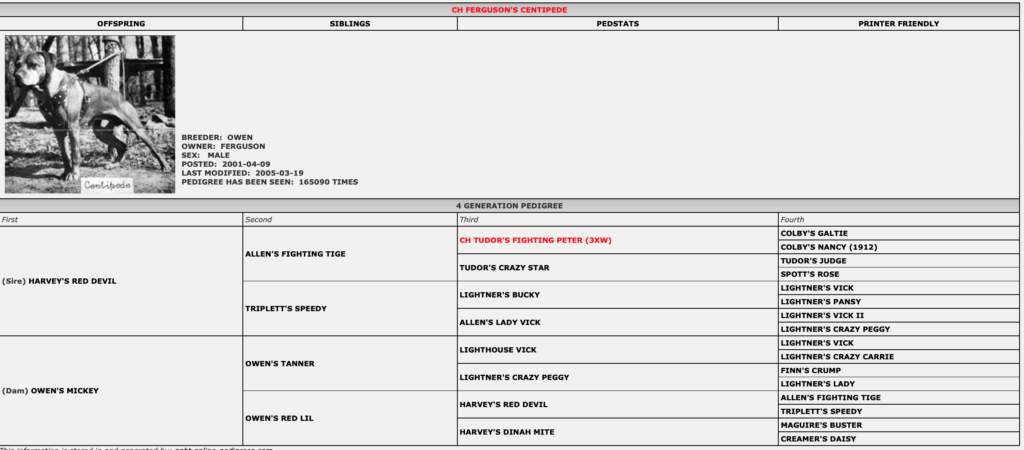
THE BEST AMERICAN PITBULL IN HISTORY
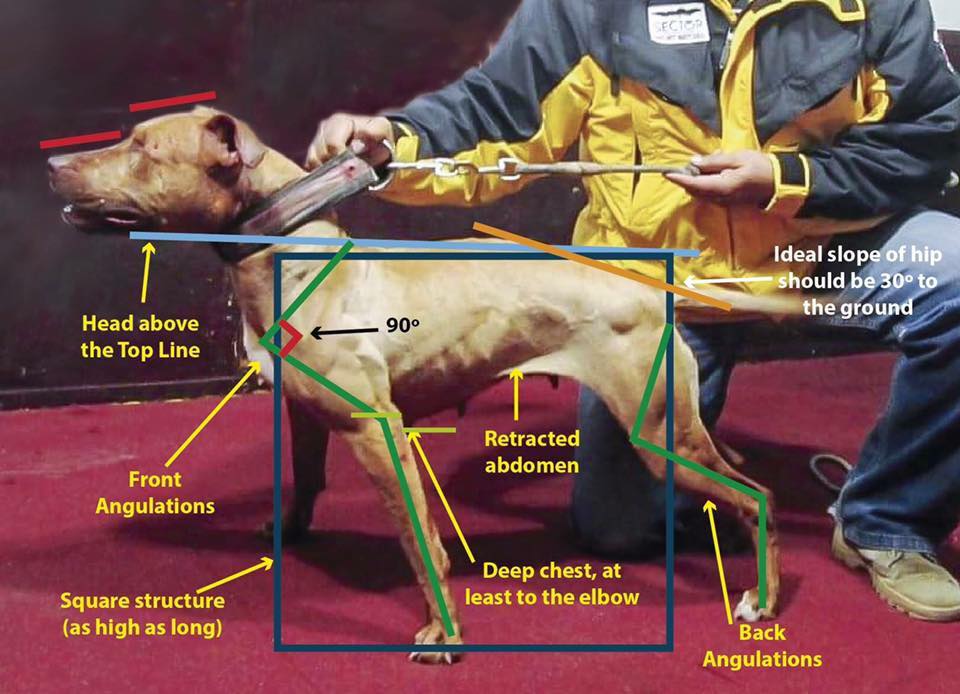
THE OLD FAMILY RED NOSE by EL Mullins
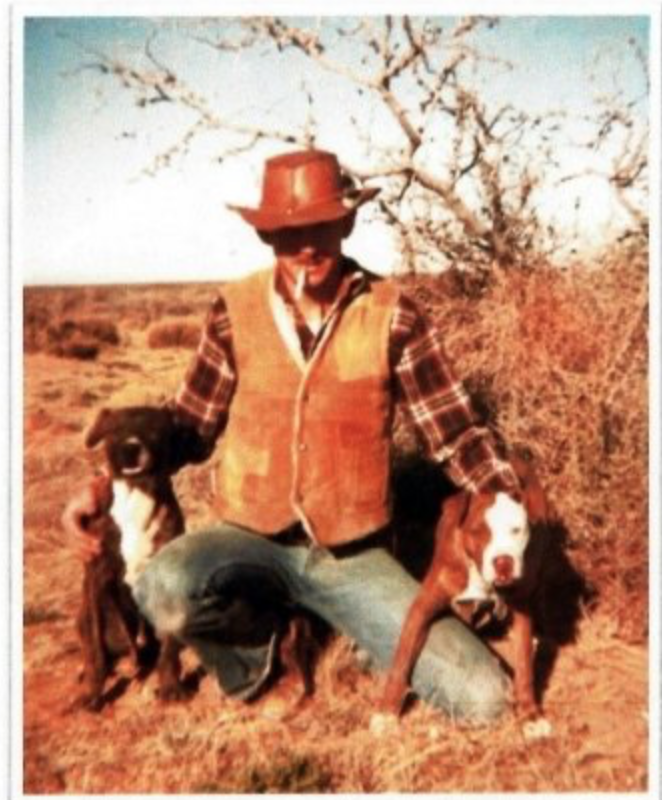
As I remember the old article by E.L. Mullins.
THE “OLD FAMILY RED NOSE” DOGS
Greetings, esteemed readers. I would like to share with you an account of the fascinating history of the “Old Family Red Nose” dogs – a significant part of the American Pit Bull Terrier’s legacy. Please note that this is not a review, as there is little left to say about these dogs that has not already been said before. Instead, this is a retelling of their origin and a re-introduction to their remarkable breed.
When we discuss the “Old Family Red Nose” dogs, we are really discussing the original dogs bred by notable individuals such as William J. Lightner and Con Feeley. In the early 1900s, Red Howell, Al Dickson, and Joe Peace acquired dogs from the first litters of Lightner’s “Vick” and “Pansy”. When World War I broke out, Peace and Dickson were drafted, leaving Howell to take care of the dogs. While Howell sold some of the dogs, he entrusted the rest to capable and trustworthy individuals. At the time, these dogs were known only as food pit dogs, and the name “Red Nose” had yet to be coined to describe them as a distinct line of the American Pit Bull Terrier.
It was Dan McCoy who later credited with coining the phrase “Old Family Red Nose” dogs to describe and differentiate them from other pit bulls. McCoy obtained dogs from Frenchman Bourgeous, who had received several dogs directly from Lightner and bred them for his own pleasure. Bourgeous was successful in preserving the “Red Nose” strain, and Hemphill went with McCoy to Louisiana and, with the aid of Gaboon Trahan, purchased several dogs from him. Hemphill only kept the highest caliber of these “Red Nose” dogs and formed his foundation stock from them. Hemphill’s early advertisements reflected that he had been raising “Old Family Red Nose” dogs since 1927. Hemphill remained devoted to the breed and faithful to the “Old Family Red Nose” line throughout his life. His ads up until 1966 exclusively featured “Old Family Red Nose” dogs, with the occasional mention of 1/8th to 1/16th “Dibo” breeding thereafter.
It is worth noting that not all of the offspring from this stock were whelped “Red Nose,” and some breeders felt that the Con Feeley dogs had more “Red Nose” blood than the Lightner dogs. W.C. Roper, who received dogs from Jim Williams and Bob Wallace, bred some of the finest “Red Nose” dogs. I.D. Cole of Arizona also bred some extremely high-caliber dogs descended from Slattery’s “Mike” and William’s “Blade.” He also owned Cole’s (Fulkerson’s) “Spook,” a direct grandson of Lightner’s “Spook.” The “Red Nose” dogs were never controlled by any individual or select group of individuals, and many were produced through various crosses. Among the breeders and fanciers of the “Old Family Red Nose” dogs were Lightner, Feeley, J.P. Colby, D.A. McClintock, McCoy, Harvey and Owens, Ferguson, Ferrel, Conklin, Anderson, Bourgeous, Plemmons, Dickenson, Hanson, Williams, Roberts, Cole, Leo Kinard, Ed Crenshaw, Joe Beal, Jake Wilder, and many others.
Two of the leading breeders of “Old Family Red Nose” dogs through the late 1960s were Robert H. Hemphill Jr. and Robert Forster Wallace. Hemphill was friends with Earl Tudor as early as 1914 and became personally interested in the Lightner dogs in
The sources that add to the credibility of Chico Lopez as a dedicated and respected breeder of American Pit Bull Terriers:
1. ESPN article about Chico Lopez and Terence Crawford’s bond with his pit bulls: https://www.espn.com/boxing/story/_/id/30293412/pitbulls-pugilists-how-terence-crawford-dog-breeder-forged-uncommon-bond
2. ESPN article about Canelo Alvarez and his love for puppies, including those from Chico Lopez’s breeding program: https://www.espn.com/boxing/story/_/id/27949851/canelo-alvarez-loves-puppies-giving-gift-bags-punching-mario-lopez
3. The Sun interview with Terence Crawford talking about his connection with his Chico Lopez pit bull, Goldie: https://www.thesun.co.uk/sport/13529433/terence-crawford-dog-goldie-pitbull-boxing/
4. Economist article discussing the trend of DNA testing for dogs and Chico Lopez’s involvement: https://www.economist.com/united-states/americans-are-testing-their-dogs-dna-with-some-remarkable-results/21808080
- https://www.therealpitbull.com/ – Homepage of The Real Pitbull by Chico Lopez.
- https://www.therealpitbull.com/about-us/ – Information about Chico Lopez and The Real Pitbull.
- https://www.therealpitbull.com/puppies/ – Information about pitbull puppies for sale from The Real Pitbull.
- https://www.therealpitbull.com/before-you-buy-a-pitbull/ – Information about the American Pit Bull Terrier and its history.
- https://www.therealpitbull.com/bloodline/ – Information about The Real Pitbull’s breeding program and the Golden Vein bloodline.
- https://www.therealpitbull.com/richard-stratton/ – The story of Richard Stratton and his experience with The Real Pitbull.
- https://www.therealpitbull.com/athos/ – The story of Athos, one of The Real Pitbull’s dogs.
- https://www.therealpitbull.com/PITBULL-UNIVERSITY- Contact information for The Real Pitbull.
- https://www.therealpitbull.com/TEXAS-PITBULL-BREEDER – Information about The Real Pitbull’s Golden Vein pitbulls.
- https://www.therealpitbull.com/The-Bagman-Apbt – Reasons to choose The Real Pitbull for your pitbull puppy.
- https://www.therealpitbull.com/chico-lopez-collars/
- https://www.therealpitbull.com/PITBULL-BREED-STANDARD/
- https://www.therealpitbull.com/the-real-pitbull/
- https://www.therealpitbull.com/pitbull-dna/
- https://www.therealpitbull.com/frozen-semen/

